
Autism is a lifelong neurological and developmental disorder that affects children/young people in different ways. As a spectrum disorder, pupils with autism can have difficulties communicating with and relating to others and display restricted and repetitive interests and behaviours. Building a secure knowledge of how autism presents in girls and boys is critical if schools and teaching staff are to identify how to support their often-exhausting attempts to fit into a neurotypical world.
Educational settings can be a triggering environment for learners with autism. They may be oversensitive to some sounds, sudden movements, certain smells and visual stimuli. They can appear distressed or anxious when routines are changed. They may also show a lack of awareness or insensitivity to other peoples’ feelings or social cues. On this course, you will learn about the impact autism can have on a learner’s life. You will also learn how to make reasonable adjustments to your classroom and teaching practice to have a positive impact on your learner’s achievements, relationships and self-esteem.
This course aims to develop the knowledge, skills and practice of all education professionals working with children and young people (CYP) on the autistic spectrum. You will learn how to assess the needs of a learner and go on to develop a support plan consisting of SMART goals and interventions, which you will implement and later review to determine how well it meets the learner’s specific developmental needs.
This course responds to the information needs of the whole community/team supporting the child/young person with an autism spectrum disorder. Parents and carers benefit from raised awareness of their child’s needs. Advisory teachers, therapists and educational psychologists gain access to evidence-based CPD resources that can be used to strengthen capacity in their local authority and schools. Schools can use this course to train individuals or groups of teachers and teaching support staff as part of a school’s improvement plan or a whole-school initiative. NQTs/RQTs also build a secure knowledge of the graduated approach at the start of their career.
Our courses are structured into four sections. Click on the section headings to reveal page titles and some example content.
Learn about autism, the distinguishing characteristics, its prevalence, and other behaviours that may arise.
- Course aim
- Section objectives
- Defining autism
- The prevalence of autism in the UK
- Quick quiz: Facts or fiction
- The history of autism
- Communication in social interactions
-
Other aspects of communication
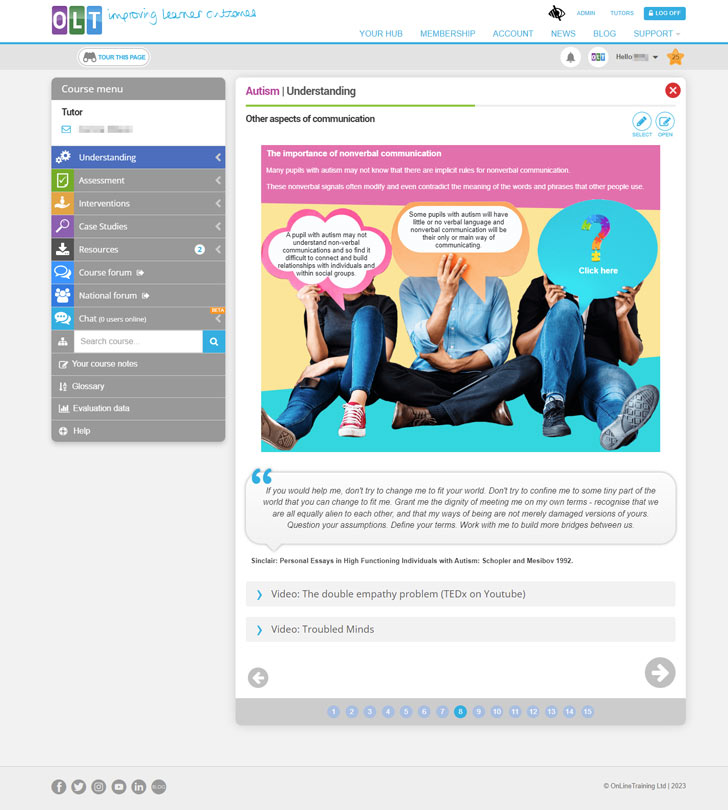
Screenshot from Understanding page 8 - Restricted flexibility in behaviour and thinking
- Sensory anomalies and additional difficulties
- Distinguishing autism from other difficulties
-
The iceberg metaphor
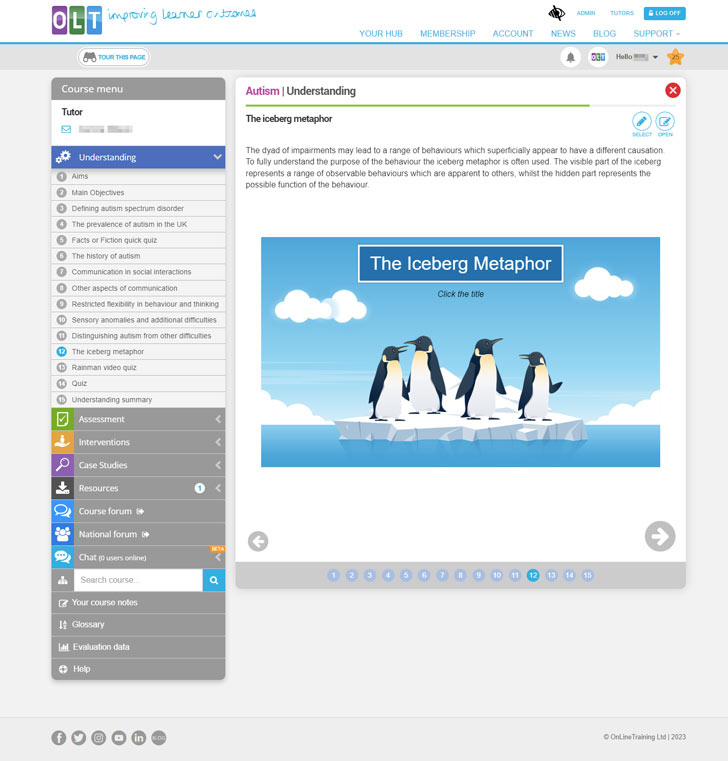
Screenshot from Understanding page 12 - Video quiz: "Rainman"
- End of section quiz
- Section summary
Understand the need for assessment, and the range of informal assessments that can be carried out in schools.
- The purpose of assessment and your learner’s profile
- The process of assessment
- Assessing communication
-
Assessing social interaction
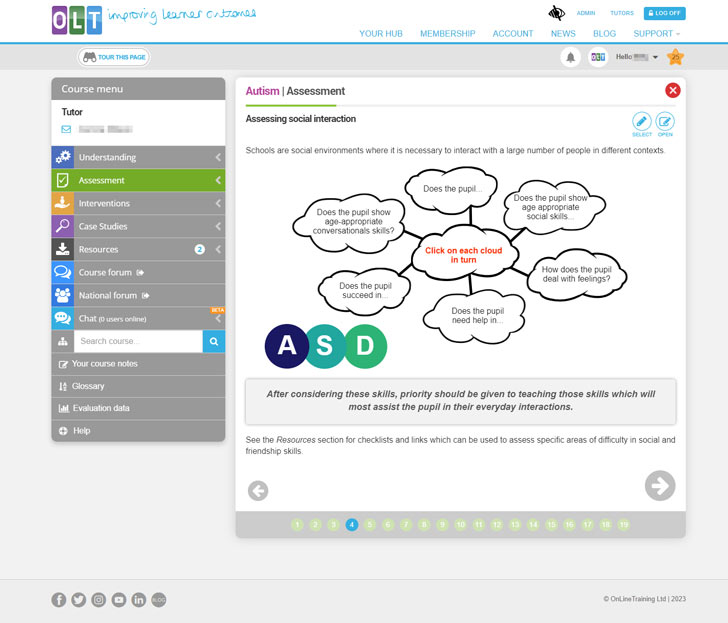
Screenshot from Assessment page 4 - Assessing social imagination
- Assessing flexibility in behaviour and thought
- Assessing sensory process
- Assessing perceptual differences
-
Assessing behaviour: A-B-C analysis
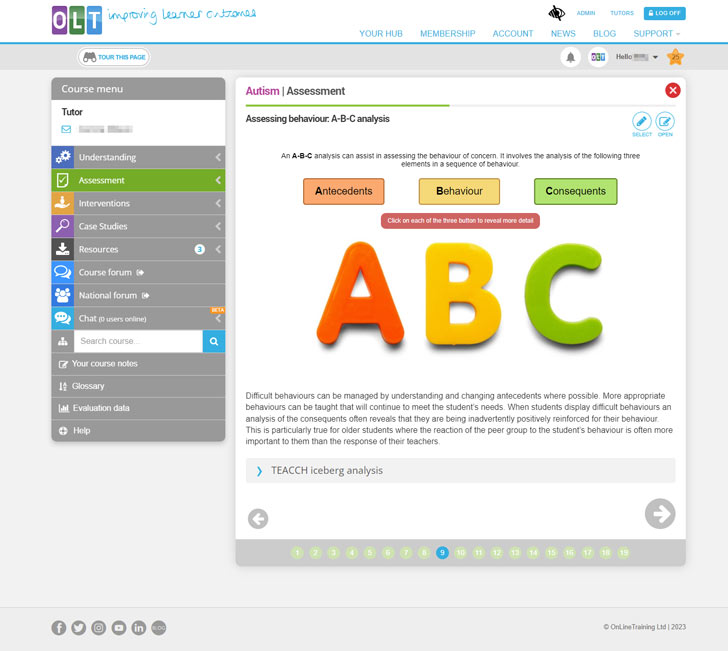
Screenshot from Assessment page 9 - Assessing behaviour: S.T.A.R analysis
- Identifying antecedents and setting events
- Assessing the physical environment
- Assessing school culture and climate
- Assessing the need for adjustments
- Assessing the predictability of the school environment
- Other factors to consider when assessing needs
- Course assignment: Your learner’s three SMART goals
- End of section quiz
- Section summary
Explore a range of inclusive adjustments to meet the needs of pupils with autism and discover ideas for developing an autism friendly learning environment.
- Section objectives
- Developing and designing appropriate interventions
- Developing communication skills
- Developing social relationship skills
- Supporting flexible thinking
-
Supporting sensory and perceptual difficulties
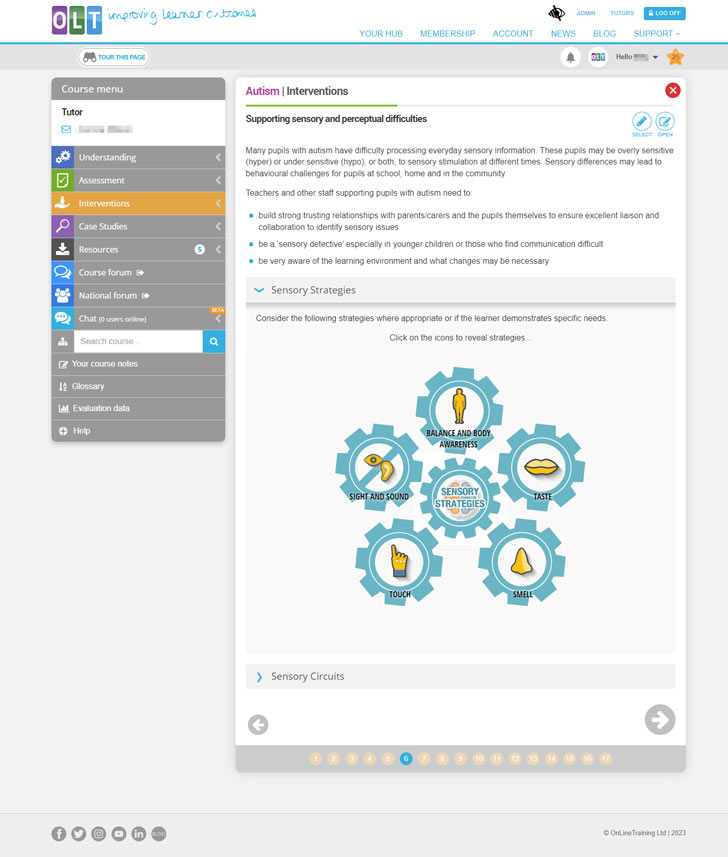
Screenshot from Interventions page 6 - Using visual and other prompts
- Managing antecedents
- Reinforcing desirable behaviour
- Reasonable adjustments and developing autism friendly learning environment
-
Supporting transitions
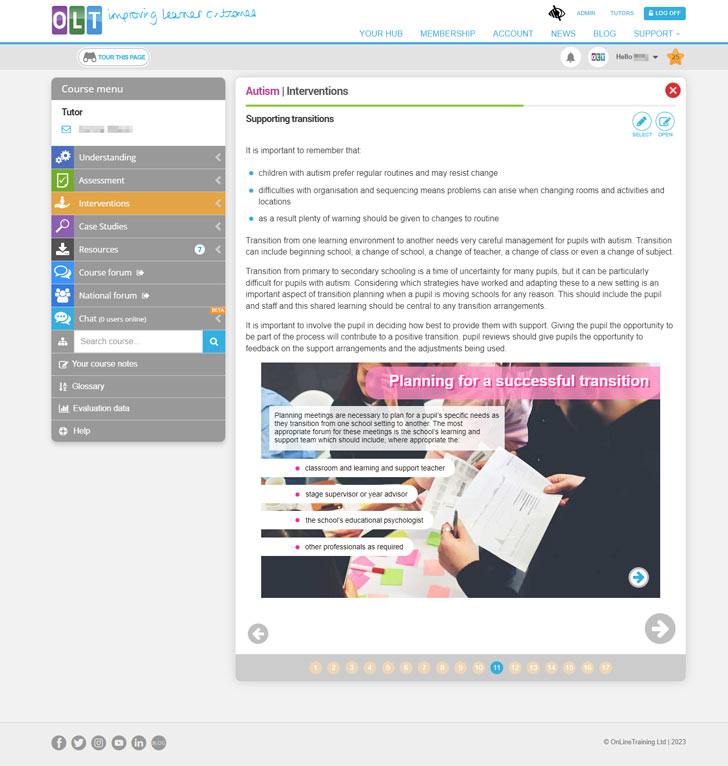
Screenshot from Interventions page 11 - Curriculum adjustments in the classroom
- Developing resilience and coping skills
- Developing collaboration between home and school
- Course assignment: Your learner’s interventions
- End of section quiz
- Section summary
View videos of authentic learners with autism, the interventions implemented and their resulting progress.
- Case study: Adam, age 6
- Case study: Lois, age 7
- Case study: Matthew, age 14
- Case Study: Teachers TV
- Case Study: Understanding Christopher
Other Position
Other Position
Teaching Assistant
Other Position
Teaching Assistant
Teaching Assistant
Teaching Assistant
Teaching Assistant
Teaching Assistant
Course learning outcomes
On successful completion of the course, you will be able to:
- describe the distinguishing features of autism spectrum disorders
- explain the restricted flexibility in behaviour and thinking
- identify potential atypical sensory responses to environment stimuli
- explain the purpose and process of individual education assessments
- choose appropriate assessment tools to determine the level of adjustments required
- carry out assessments of communication, social integration and sensory processing abilities
- evaluate particular behaviours and their implications for learning
- design and plan strategies to reinforce desirable behaviour
- devise interventions to develop communication and social skills
- assist your school to develop an ASD-friendly learning environment
- create an action plan to support a pupil/group of pupils in your school

